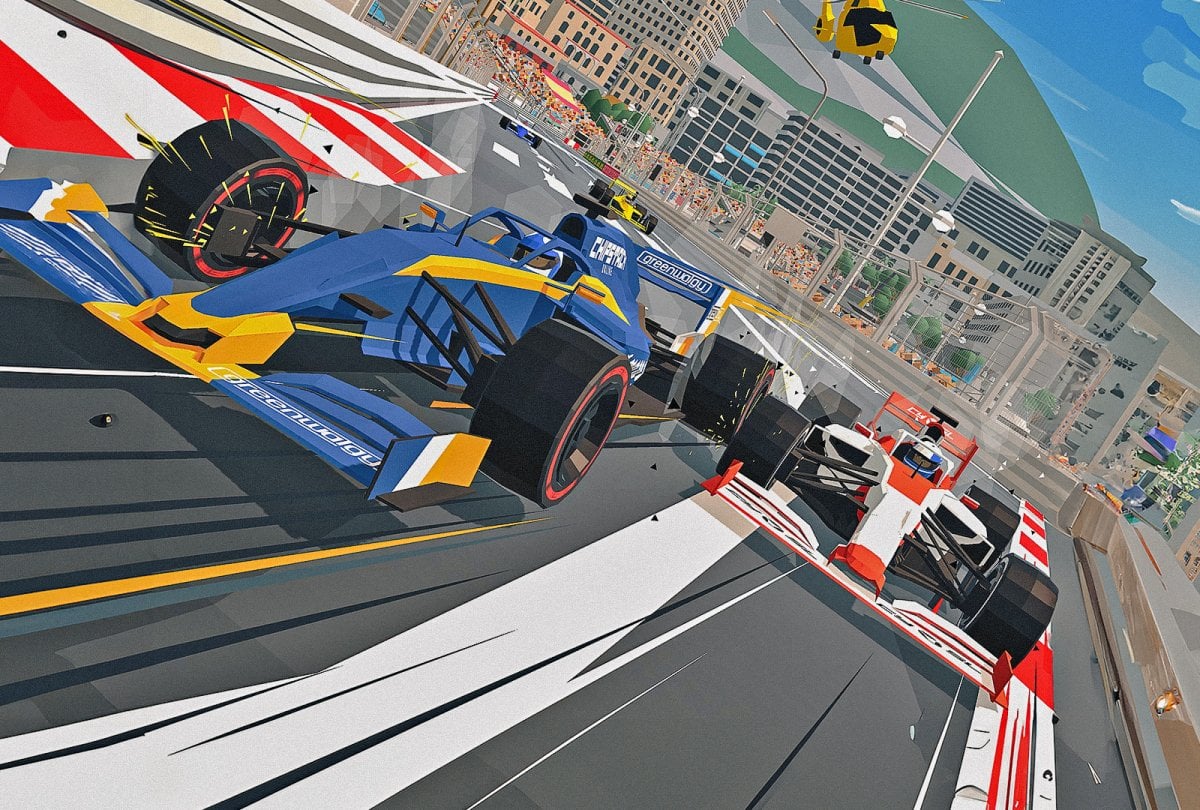Beautiful, elegant, minimalist: those are the traits of Cipher Prime, makers of acclaimed puzzle games such as Auditorium. All of their works follows those three tenants, both in gameplay, visuals, and music.
In Auditorium, you manipulated colored streams of sound that produce symphonic music once directed to corresponding canisters. A grey background and a few simple nodes emblazoned with symbols dictating what each node does – whether it be an arrow signaling the direction the stream will move in or shields heralding their reflection – were all that populated the scene. Simple visuals, gorgeous music, and overall graceful design: a perfect encapsulation of Cipher Prime’s philosophy.

In Splice, you arrange cells to create sculptures. The scene, a softly colored, microbial ocean. Carefully placed white lines dot the area, outlining the structure, guiding your calculated alterations to the cellular figure. Calming piano notes fill the air, its tempo and tone steadily rising as you complete each new sequence. Once more – beauty, elegance, and minimalism are represented at their finest.
Cipher Prime’s latest is a masterpiece; not just in visual and aural pleasure, but in play as well. Splice is simple but intricate. The goal is to build molecular sculptures in as few moves – or “splices” – as possible. You’re limited in the number of splices you can make – anywhere from as little as two to as many as six – and are often working with long, elaborate strands of cells. Only those at the end of a strand can be moved individually; selecting one higher on the chain moves all subsequent cells along with it. Taking either and attaching it onto the side of an existing line will add a new branch to that strand. As the levels grow more difficult, so to do the sculptures you work with.
Multiple types of cells further complicate matters by duplicating and deleting cells and strands or creating new ones entirely, all of which can be used in concert to varying degrees of ingenuity. Produce new cells to then clone symmetrical image, deleting the few excess parts to make a bacterial-esque strand. Or duplicate scattered, multi-pronged limbs twice or trice over to then rearrange gorgeous sets of wings.

These principles are conveyed solely through play, not a single tutorial in sight (though there is a menu that puts the important stuff into words, if you prefer). Evocative iconography details what each new cell type does – an arrow to indicate creation, for instance, or an X to signal deletion – whilst later-introduced mechanics come to you naturally. For example: One stage throws a surplus of cells your way, but doesn’t give any means of disposal. You only need three, yet you have six. The solution? Just remove the excess from the equation; they’ll vanish once the structure is complete.
By making certain puzzles exempt from using every piece on the board, Splice adds a layer of unpredictability. Suddenly the puzzle isn’t about determining what moves to make where and in what order so much as it is figuring out which cells actually matter. It’s not until the third or fourth sequence that it comes into play. The early goings are far less taxing, acting primarily as an introduction, but still challenging enough to frequently leave you stumped.
The remainder of the puzzles border on maddening. Their elaborate, intricate limbs dazzle as much as they do dizzy, the sculptures they form unparalleled in their beauty. The four additional levels that are unlocked after completing the standard seven are especially overwhelming. All that came before feels like child’s play by comparison.

A seemingly insurmountable challenge is mitigated by the peaceful notes of the many piano compositions of Splice. As per usual for puzzlers like this, frustration sets in quickly as attempts fail and ideas run dry. But the calm, soothing sounds of Splice keep anger at bay, a sense of ease moving over you as tensions begin to flare. The music starts on a low, purely ambient note, but steadily moves toward a more pronounced theme as you descend deeper.
Splice’s greatness shines best in the angelic solutions – that is, solving a stage without using all of your moves. Old triumphs become new again, the discovery of where corners can be cut just as – if not more – rewarding than unveiling the original solution. There are no prizes for using the angelic solutions, nor are they ever really mentioned save for a small hint or two, merely there for incentive to revisit old puzzles. With how quick a romp Splice is, however, any incentive you can get is worth chasing.
Splice doesn’t take long to finish. Within five hours of game-time, I had seen all there was to Splice. Unfortunate that it’s so brief, but what’s there is nothing short of fantastic. Cipher Prime proves their mastery of the genre once more, creating an absolutely brilliant, gorgeous puzzler.





